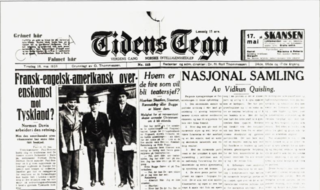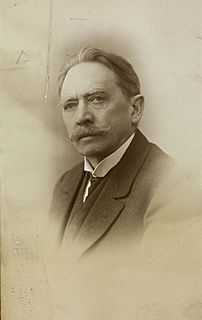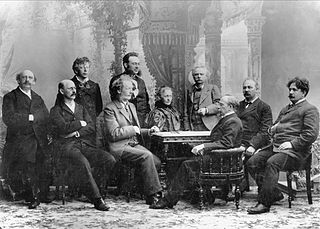Per Reidarson (27 May 1879 – 21 January 1954) was a Norwegian composer and music critic.
In the early twentieth century he was an acknowledged composer. For his body of work he was granted kunstnerlønn, a guaranteed minimum income for artists, by the Norwegian state in 1938. He had also worked as a music critic in the newspapers Tidens Tegn and Arbeiderbladet . [1]
Guaranteed minimum income (GMI), also called minimum income, is a system of social welfare provision that guarantees that all citizens or families have an income sufficient to live on, provided they meet certain conditions. Eligibility is typically determined by citizenship, a means test, and either availability for the labour market or a willingness to perform community services. The primary goal of a guaranteed minimum income is to reduce poverty. If citizenship is the only requirement, the system turns into a universal basic income.

Tidens Tegn is a former Norwegian newspaper, issued in Oslo from 1910 to 1941.
However, he eventually joined the political party Nasjonal Samling and began writing for their official publication Fritt Folk . In 1941-1942, while Norway was occupied by Germany, he held the lecture Norsk og unorsk i musikken ('Norwegian and Un-Norwegian in Music'), anger directed at the perceived "Jewish and Marxist" Modernist music. [1]

Nasjonal Samling was a Norwegian far-right party active from 1933 to 1945. It was the only legal party of Norway from 1942 to 1945. It was founded by former minister of defence Vidkun Quisling and a group of supporters such as Johan Bernhard Hjort – who led the party's paramilitary wing (Hirden) for a short time before leaving the party in 1937 after various internal conflicts. The party celebrated its founding on 17 May, Norway's national holiday, but was founded on 13 May 1933.
Fritt Folk was a Norwegian newspaper, published in Oslo. It was the official organ of the fascist party Nasjonal Samling, and came to prominence during the Second World War.

The German occupation of Norway during World War II began on 9 April 1940 after German forces invaded the neutral Scandinavian country of Norway. Conventional armed resistance to the German invasion ended on 10 June 1940 and the Germans controlled Norway until the capitulation of German forces in Europe on 8/9 May 1945. Throughout this period, Norway was continuously occupied by the Wehrmacht. Civil rule was effectively assumed by the Reichskommissariat Norwegen, which acted in collaboration with a pro-German puppet government, the Quisling regime, while the Norwegian King Haakon VII and the prewar government escaped to London, where they acted as a government in exile. This period of military occupation is in Norway referred to as the "war years" or "occupation period".
In 1945, when the occupation of Norway ended, Reidarson was marginalized and immediately lost his artist's income. [1]



